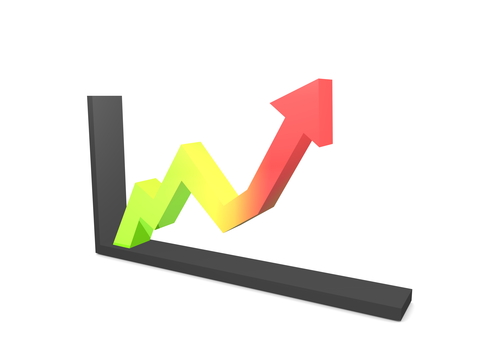As more and more investors use share price graphs as an element of their research it is all good and well spotting a chart breakout on the upside but there will be a time to sell. Whether or not you believe in share price graphs as an indicator of future share price movements there is evidence to suggest trends do repeat themselves on a regular basis. So, how do you focus your investment strategy to making use of share price graphs on the upside and the downside?
Active traders
If you do place great emphasis on share price graphs as a means of spotting the next “big investment” you may need to act quickly when the share price breaks through support levels and the uptrend is broken. These are not really situations where you buy and tuck-away or invest on a long-term basis because short-term trends do change quite regularly although long-term investors can also make use of long-term trends.

Banking a profit
As you become more experienced in trading stock markets you will likely “get a feel” for stocks and when it may be time to sell. When the volumes have peaked, the share price is drifting off or perhaps there is been some news which was disappointing against your expectations – sometimes this can prompt the urge to sell and bank a profit.
As we have mentioned time and time again, the day when it is wrong to bank a profit is the day when hell freezes over because this will never be the case. However, what if the uptrend is still in place according to the share price graph?
The trend is your friend
Ultimately, the factors which come together to create a share price level can be extremely complicated and what you see is not always what you get. Some of the information will be in the public domain some will be inside information which has leaked into the market but if the trend is maintained, why even consider selling?
If you sit back and think of this logically, if the share price graph played a great role in you actually investing in the first place then surely you should listen to the share price graph for the most appropriate selling point? Do not be concerned if the uptrend continues into heady ground because there may be a fundamental rerating of the company, perhaps a takeover in the offing or good news in the pipeline. It can also be tempting to sell at the first downturn which will allow you to bank a profit and is never wrong.
Retracement
Over time you will see share prices which are pushed towards heady levels with many following the pattern of consolidating at around 50% of the rise. So if a share price was to rise quickly from one dollar up to 2 dollars then it would not be a surprise to see a retraction to $1.50 and a period of consolidation. Once this consolidation period has ended, a time when buyers and sellers are cancelling each other out, many shares will then start another perhaps more solid uptrend.
There is nothing wrong in selling at the first sign of a downturn, and banking a profit, watching the shares consolidated lower down. Whether the first drop in the share price will signal this period of consolidation is debatable because only time will tell. Then, once the shares have consolidated it may be time to jump aboard again and take advantage of the long-term uptrend.
Remember, the trend is your friend!
